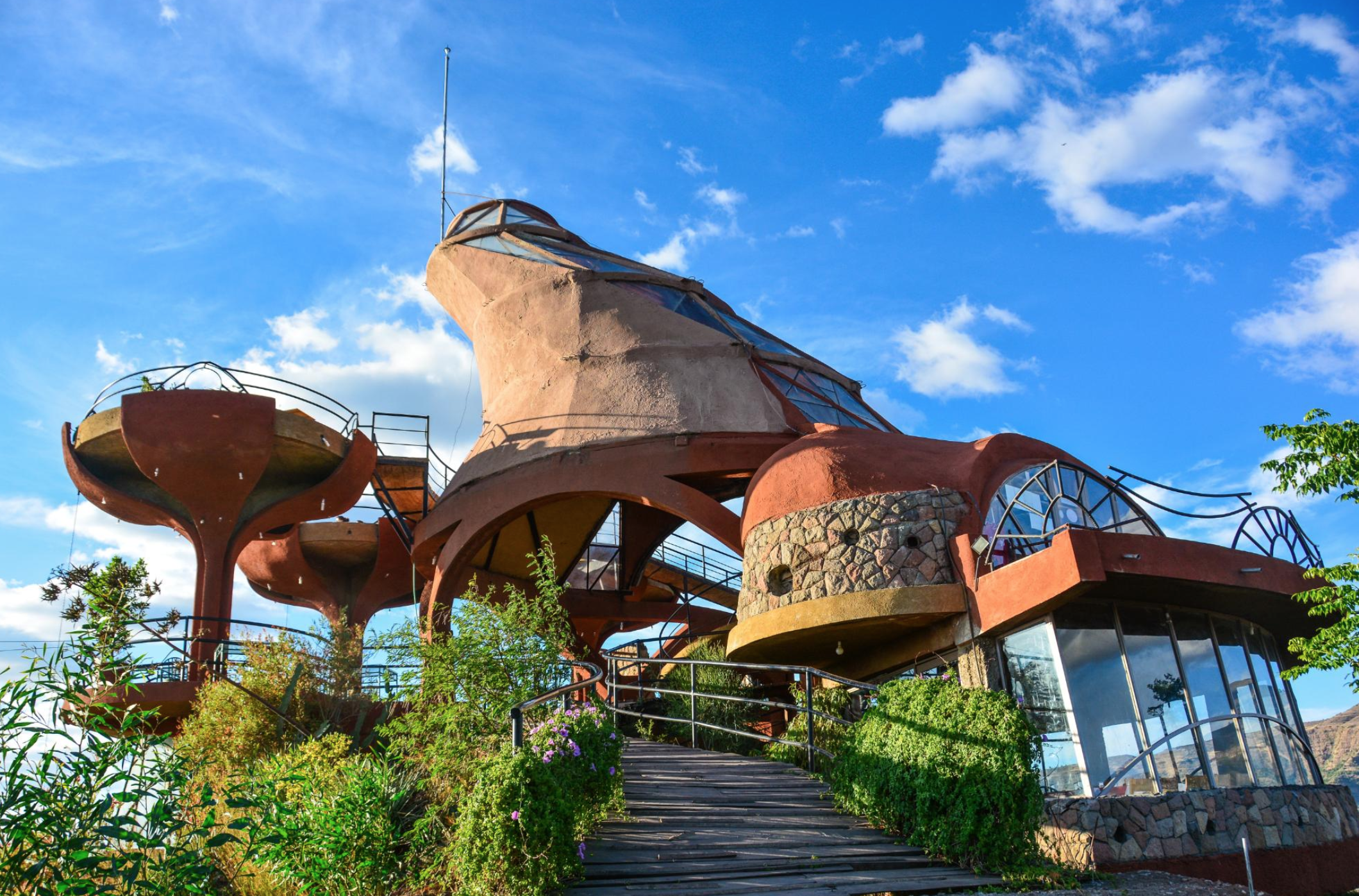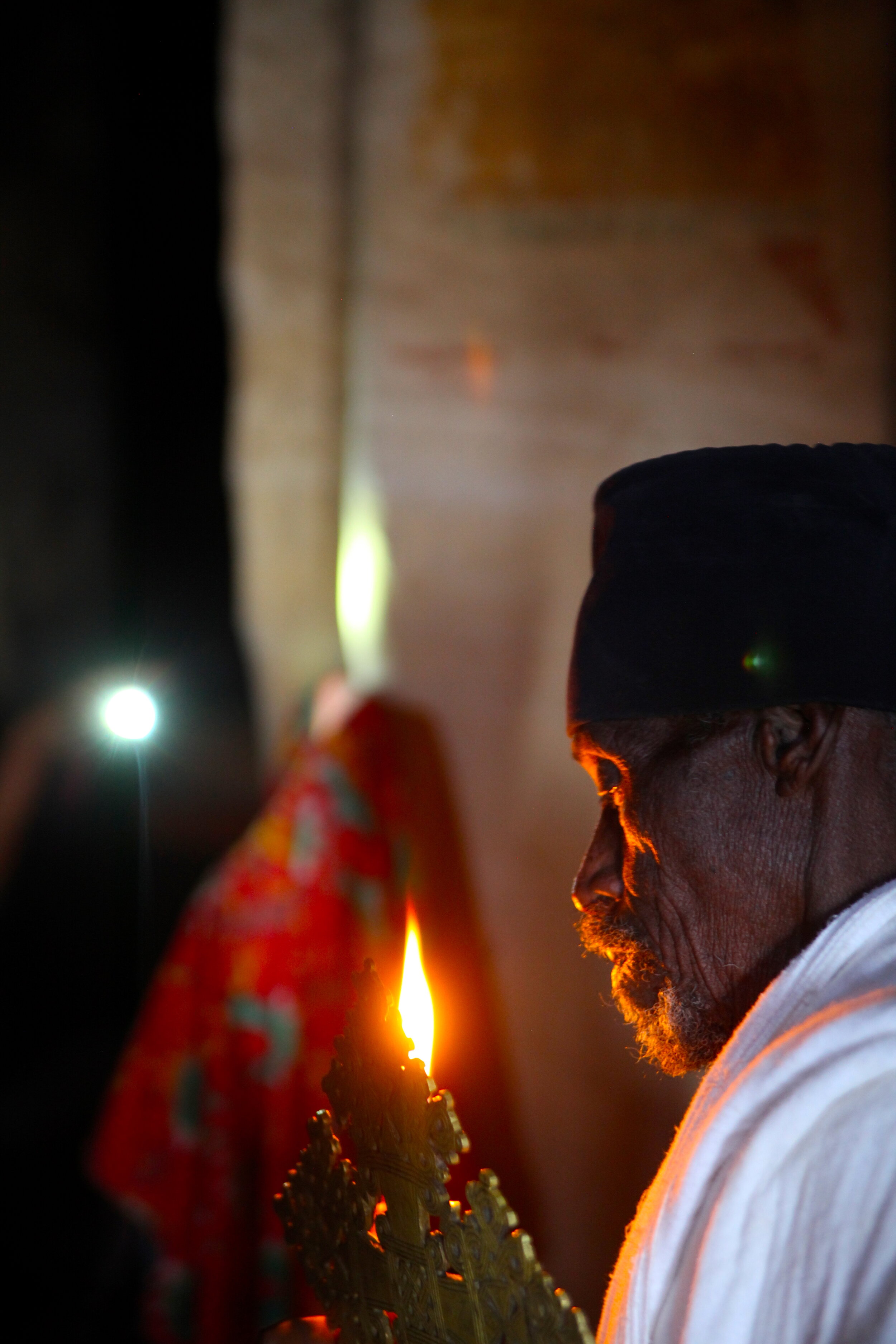
Lalibela
Famous for the rock hewn churches carved under King Lalibela in the 12th and 13th centuries, Lalibela is one UNESCO World Heritage site that can’t be missed. Located in Northern Ethiopia and considered by some to be the Machu Pichu of Africa, and bearing a close resemblance to the rock carved city of Petra, lies a town teeming with mysticism and wonder. After Jerusalem was invaded and overtaken in the 1187, it is said that King Lalibela had a dream one night, where he was told to build a New Jerusalem out of stone as a symbol for spirituality and humility.
Situated on ancient volcanic rock, Lalibela’s eleven churches were carved out of basaltic rock from the top down. Initially the churches were carved down into massive stone blocks, which were then further chiselled from the inside out to create doors, windows, columns, roofs, and various other details. Each church is connected to the other by underground tunnels and roads and the entire area is organized to resemble the holy site of Jerusalem itself. The churches are divided into three groups, the North, East, and West. It is recommended that visitors start with the North group, then the East, and ending with St. George in the West, carved in the shape of a crucifix, as the grand finale.
The chemical weathering, physical decay, and structural instability of these ancient buildings only accompany the feeling that one has stepped into a time portal and opened the door to a world of myths and devotion that echoes the humble stories of pilgrims who have been traveling here for centuries.
What to see
Visitors may attend Sunday mass, where they are likely to find themselves surrounded by hundreds of devotees dressed in white, and entranced by the rhythm of prayer and the scent of Frankincense wafting in the air. Christmas in Lalibela, hosted on January 7th in line with the Ethiopian Christmas, sees a flood of pilgrims pouring into the town and to the churches from distances near and far, adding to the authentic old world quality of this ancient town.
When visiting Lalibela, the village and neighbouring areas are worth taking the time to see. The Lasta Tukuls, are two storey round houses made from local red stone. They dot the village around the churches and house local priests, monks, pilgrims, and other local people making Lalibela even more of a living heritage site for people to visit, rest, and feast.
Whether a religious pilgrimage is on your list, or you’re simply interested in experiencing the local culture and surrounding sites, wandering through the tunnels that connect the 13th century churches of this historical landmark, or meandering the Saturday market stalls, entranced by the colours spices, you will feel the magic of Lalibela. Boasts a rich experience for anyone who comes to visit, this town will leave visitors dusty, smelling of Frankincense, and utterly infused with the majesty of this living history.
Getting Around
Outside the village, hikes, view-points and other churches offer more to Lalibela’s location. Visit one of the oldest natural cave churches is located at Yemrehanna Kristos. Take a tuk tuk ride to the top of Ashetan Maryam, 3000 m above sea level. Or see the sunset at Na’akuto La’ab, 7 km from Lalibela.
What to Eat
On Saturdays, the market explodes with vendors. Laid out on the ground or on small tables and hiding from the sun under tarpaulins, are an incredible array of fruits and vegetables, spices and incense, and all manner of useful items. The market is massive and alive, as it offers all that the local people could need for the week.



